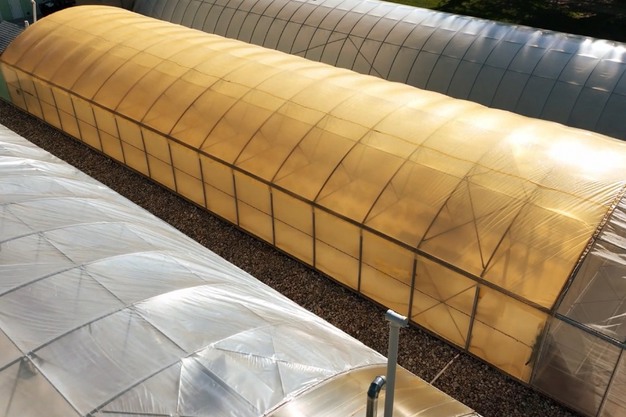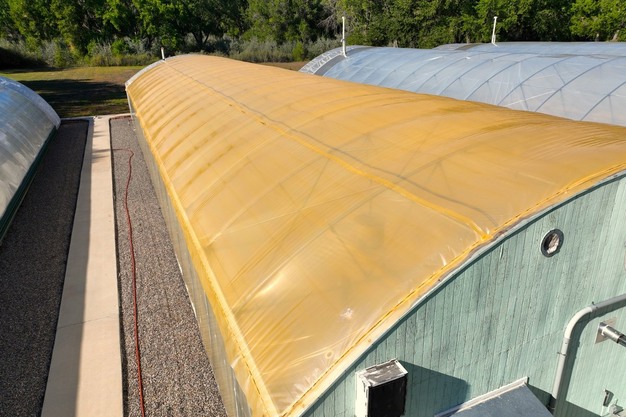Greenhouse and tunnel covers influence light transmission, heat retention, and moisture control. From high-tech glass structures to cost-effective plastic films, each material has unique properties that impact plant growth. One innovative solution gaining traction is UbiGro covers, which use photoluminescent technology to enhance plant-friendly light.
Eric Moody, Director of UbiGro Sales, highlights the importance of cover selection: "A greenhouse cover isn't just about protection; it's about optimizing the environment for plants. The right cover can make all the difference in yield, quality, and efficiency."
Using light for plant growth
Light transmission is one of the most critical factors in greenhouse productivity. Different cover materials impact the quantity and quality of light that reaches crops.
"Polycarbonate panels, for example, are known for high light transmission and insulation, and these panels often include UV-protection layers to prevent degradation. Then you get plastic films which vary in thickness and composition, with some films blocking UV rays while others diffuse light for uniform plant growth."
"Our UbiGro covers are designed with the latest photoluminescent technology. They convert UV and blue light into red and orange wavelengths, which is the light spectrum that drives photosynthesis. We're not just letting light through; we're improving it. UbiGro enhances the quality of sunlight to maximize plant productivity."
 © UbiQD
© UbiQD
The greenhouse effect in action with heat retention
A greenhouse's ability to retain heat is another factor that influences plant growth, especially in colder climates.
"With polycarbonate panels, due to their multi-wall construction, they help trap heat efficiently, making them an excellent choice for winter growing. Plastic films are lightweight and offer reasonable heat retention, but require periodic replacement due to wear and tear."
"Our UbiGro covers are similar in heat retention to plastic films, but with added benefits from their light-enhancing properties. Growers get the same thermal protection as traditional films, but with the added advantage of improved spectral light conversion."
Preventing condensation and disease with moisture control
Controlling humidity inside a greenhouse is essential for preventing disease and managing water loss, and different covering materials offer varying levels of moisture control. Polycarbonate panels, for example, are less prone to condensation due to their insulating properties, and some are treated with anti-fog coatings to reduce moisture buildup further. Plastic films often feature anti-drip coatings that help regulate humidity by minimizing condensation. UbiGro covers incorporate an anti-condensate additive to prevent water accumulation on the surface. "Excess moisture can lead to plant diseases, and our covers are designed to help mitigate that risk," Eric explains.
 © UbiQD
© UbiQD
Maximizing investment with durability and longevity
Beyond moisture control, durability is key in selecting the right greenhouse covering, as growers must balance cost with long-term performance. "Polycarbonate panels offer exceptional durability and impact resistance, often lasting more than a decade. In contrast, plastic films provide a more cost-effective solution but typically need replacement every one to four years, depending on environmental exposure."
"Our UbiGro covers have a similar lifespan to standard plastic films but offer the added advantage of spectral benefits. We designed UbiGro to match the durability of existing plastic covers while delivering a significant boost to plant growth."
For more information: UbiGro
UbiGro
Eric Moody, VP of sales and marketing
eric@ubiqd.com
sales@ubigro.com
ubigro.com
